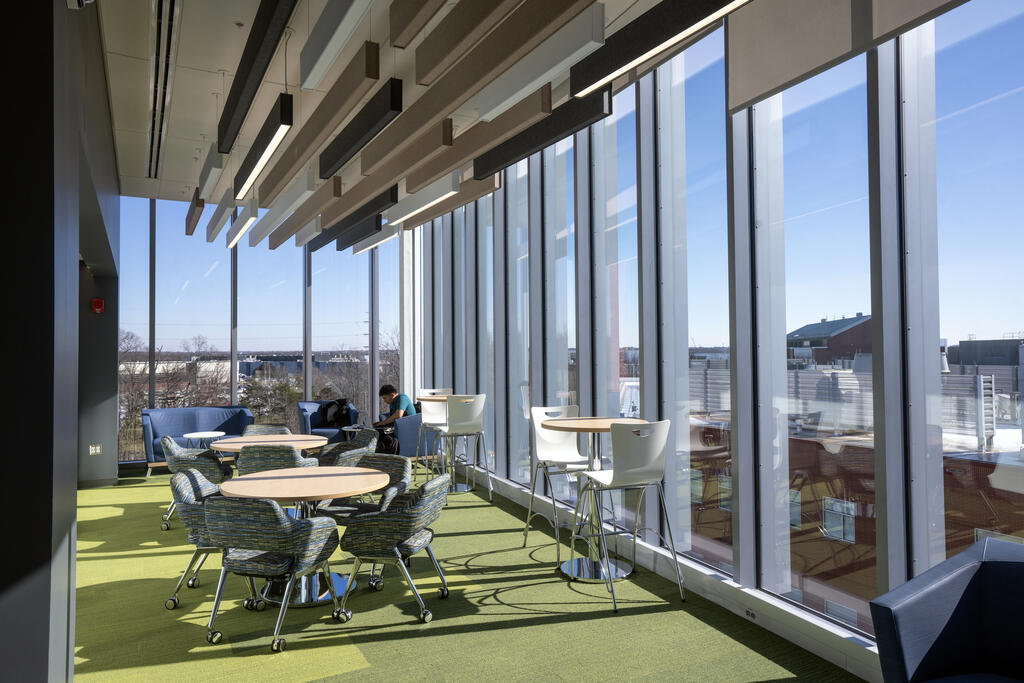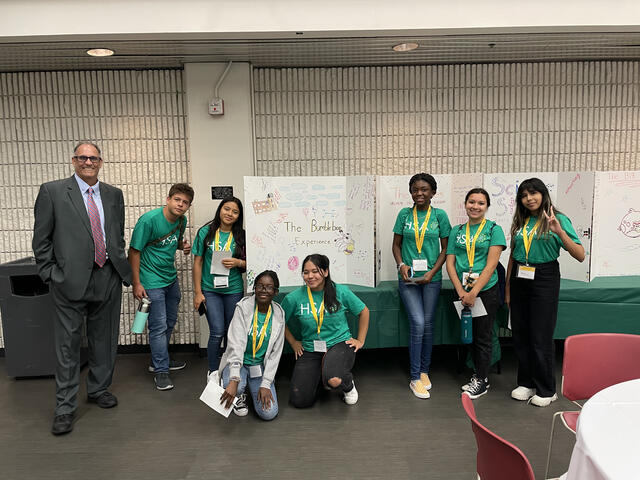Admission CTAs
Discovering STEM pathways to 'get there'
When you ask an aspiring undergraduate student the age-old question, "What do you want to be when you 'grow up?'" some of the answers are changing. And we at Mason Science are encouraging those options to evolve.
There are many people who still respond with traditional responses like doctor, engineer, or astronaut with a desire to heal, build, or explore. And our Mason Science learning and research experiences help these students acquire the necessary scientific skills to succeed along these paths.
Yet, to be in the 'success business,' it is our responsibility at Mason Science to present pathways to both current and future scientific fields and provide unique, meaningful, even personalized opportunities for individuals to ‘get there,’ as one shapes wherever that professional destination may be.
And, as I mentioned in a previous blog, it's especially our responsibility to present pathways to individuals who may not already be exposed to emerging or lesser-known scientific fields including computational data, geoinformation, climate, forensics, or materials science to our future workforce.
Over the past few years, it's been fascinating to me to watch people react when presented with an opportunity or some STEM (science, technology, engineering, and mathematics) fact about a field that they didn't know about before.
I can actually see the moment when they sense the excitement, igniting their scientific curiosity from within. This feeling ran rampant during our recent Hispanic STEM Academy (HSA) coordinated with the Valhen Hispanic network.
What could we do in three days to ignite that spark of potential opportunity? Turns out, a lot.
I kicked off the three-day and two-night program last Wednesday, suggesting that participants make the most of the opportunity to build their STEM knowledge and scientific network. In addition to touring labs and connecting with Mason Science faculty and alumni, the HSA group also created and presented sustainability-focused group projects centered on the United Nations Sustainable Development Goals.
Each group selected a cause to champion--including quality education, zero hunger, clean water and sanitation, the changing climate, and life below water--and it was inspiring to hear their take on how science, policy, technology, and creative collaboration might be brought to bear to address these importance problems. Some focused locally, like at the nearby landfill or on water quality in Prince William County. But others also thought regionally, even globally in their aspirational program roll outs.
As their family members watched the brief presentations, I saw something beyond curiosity emerge in the room...deep pride and confidence.
A mother told us she was so thankful to have such opportunities to awaken her daughter's curiosity and intellect. A brother, when asked about his next step after watching the experience, expanded his network by meeting the Mason Science administrator responsible for cultivating transfer pathways. A father with a career in environmental forensics came forward with ideas to forge Mason Science student internship opportunities.
I really appreciate the efforts of all involved in these programs--the Mason faculty, staff, students, and alumni, and of course the actual participants, who pour their hearts into such activities.
One member of the workforce panel when asked about how they chose their career path shared the practical advice, "Find a way to get paid well for doing something that you love." And STEM pathways can provide many such options.
I shared the STEM workforce projections and global population demographic realities with these students. According to the US Bureau of Labor Statistics, employment in STEM jobs is robust. By the time these students are looking for their first job, (for the period from 2021 to 2031), demand for the STEM workforce, or percent employment change, is projected at an increase of 10.8 percent vs a 4.9 percent increase in non-STEM sectors. And median annual wage projection at $95,420 is more than double the non-STEM wage of $40,120.
I also explained that, despite my own science trajectory, neither of my daughters originally landed in a STEM based field after their undergraduate education, however both of them have evolved into STEM fields, one in research and the other in science education. They are shifting their focus and others are too.
Despite the enrollment cliff facing our nation, enrollment is increasing for STEM educational and research opportunities at Mason. These important, impactful programs forge ideas of where 'there' can be in an individual's educational and professional trajectories. And to me, that is one of the most important and rewarding things we can do for our community, prepare the future workforce to solve these important STEM-based problems.
FMW

